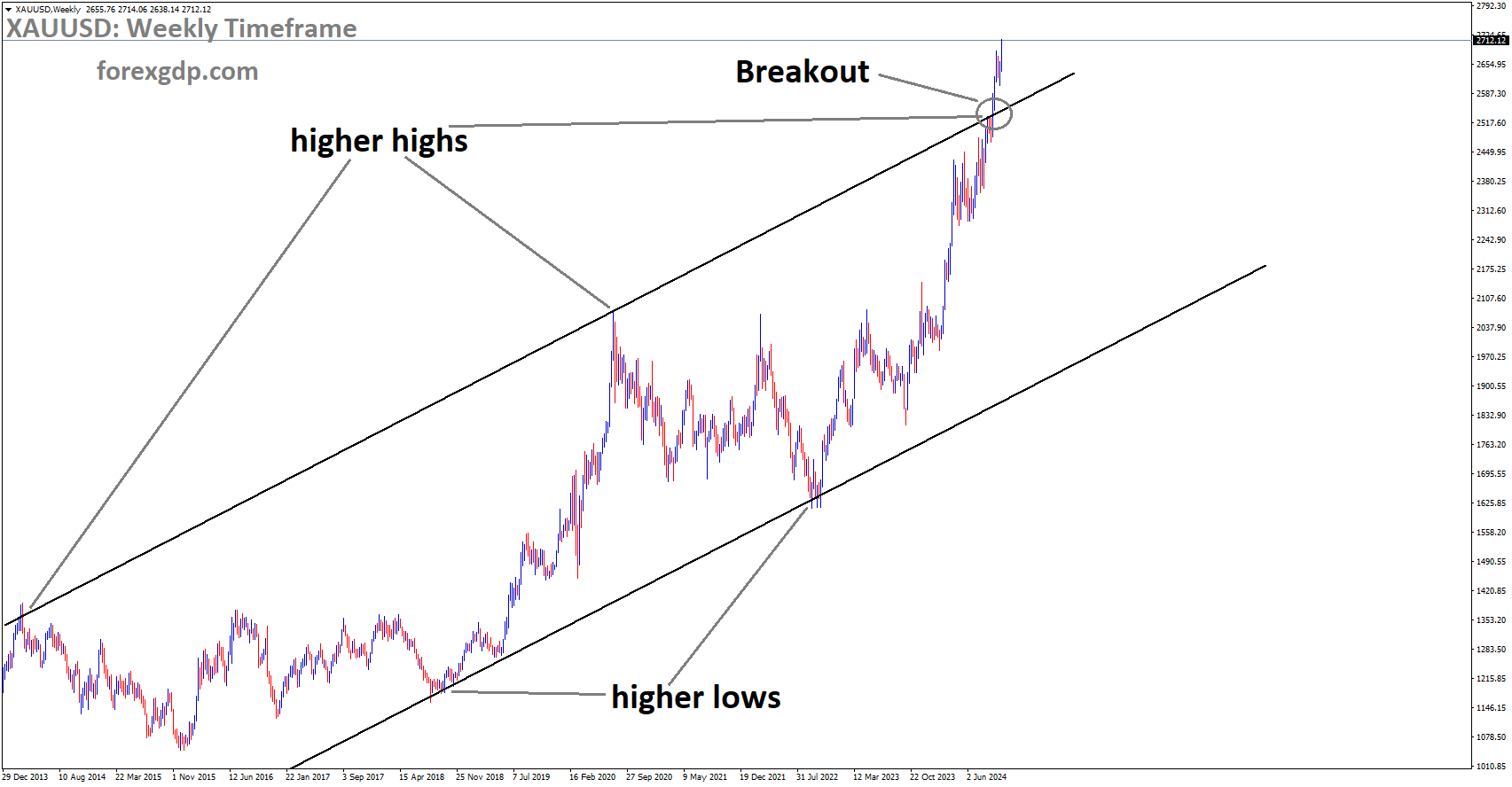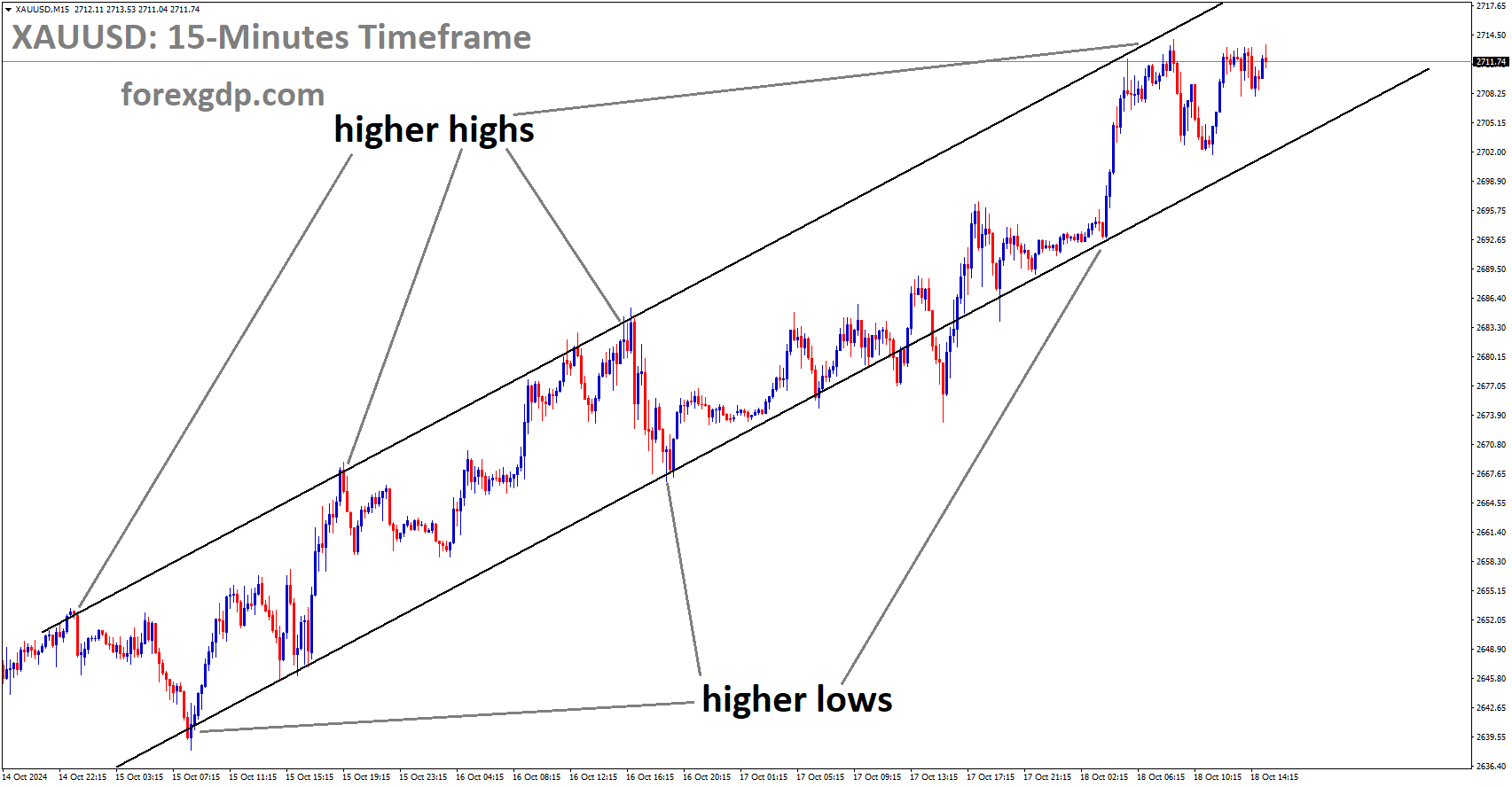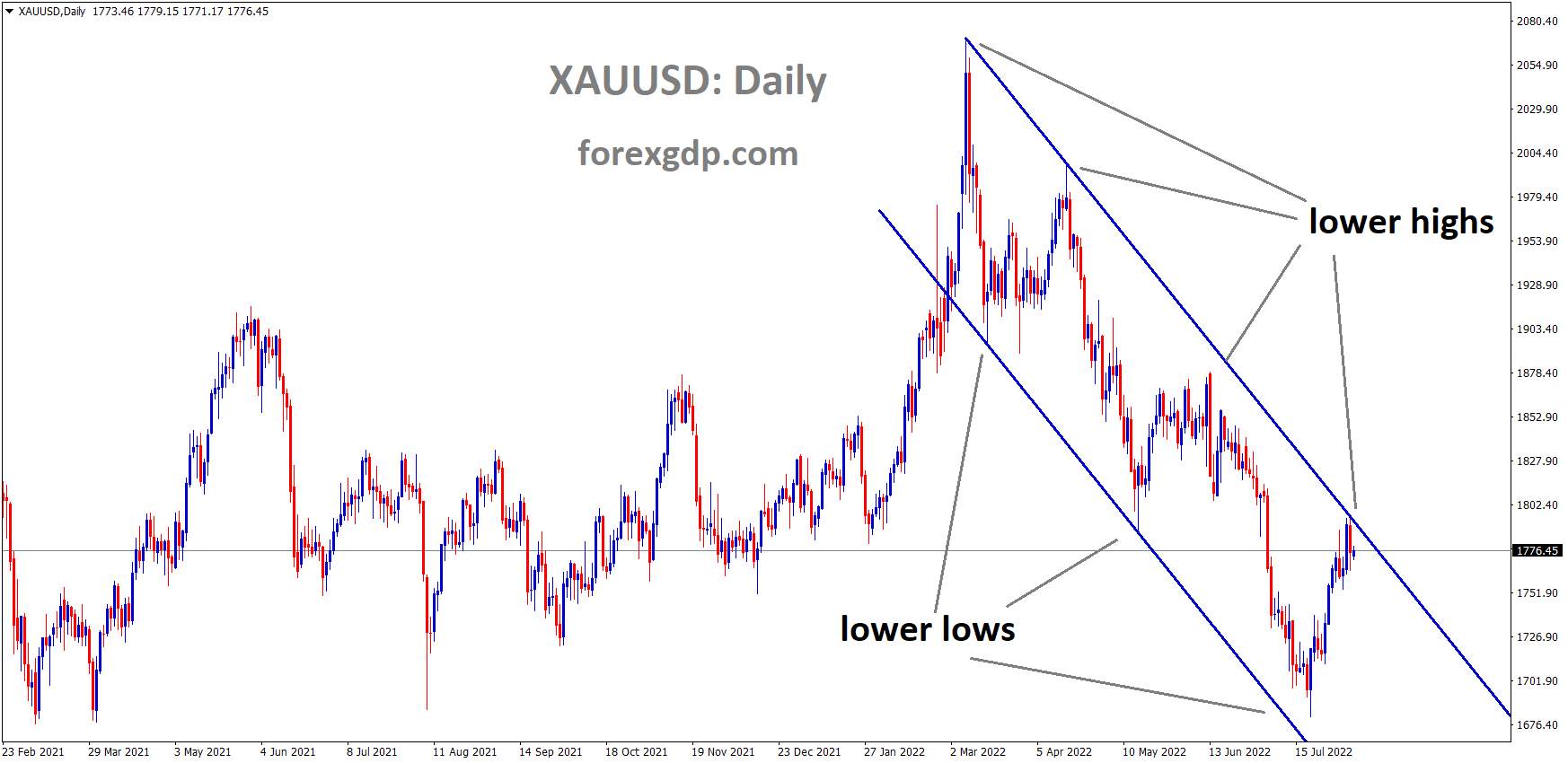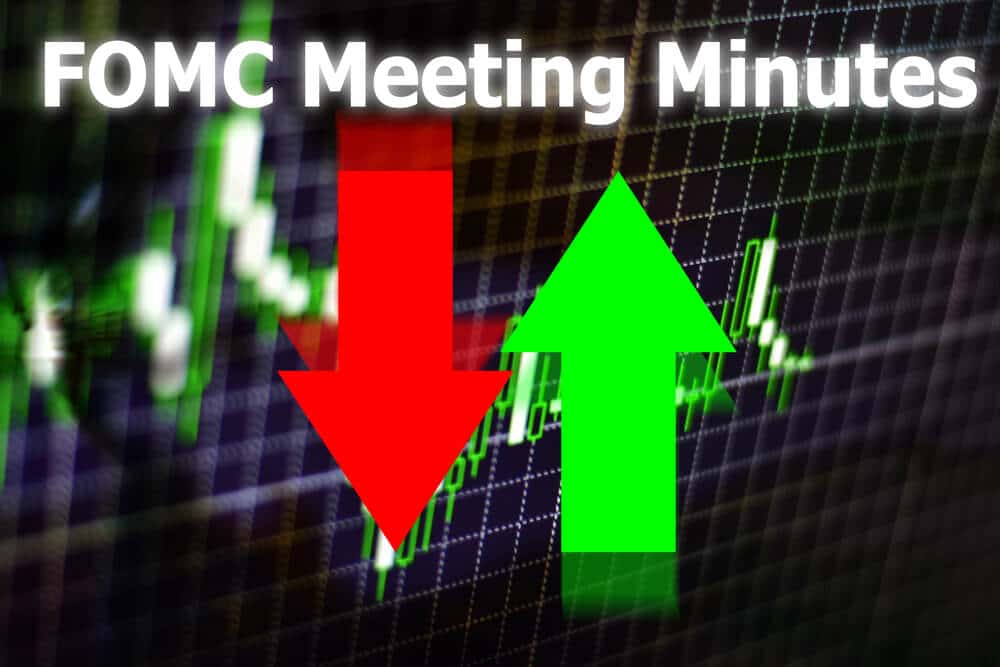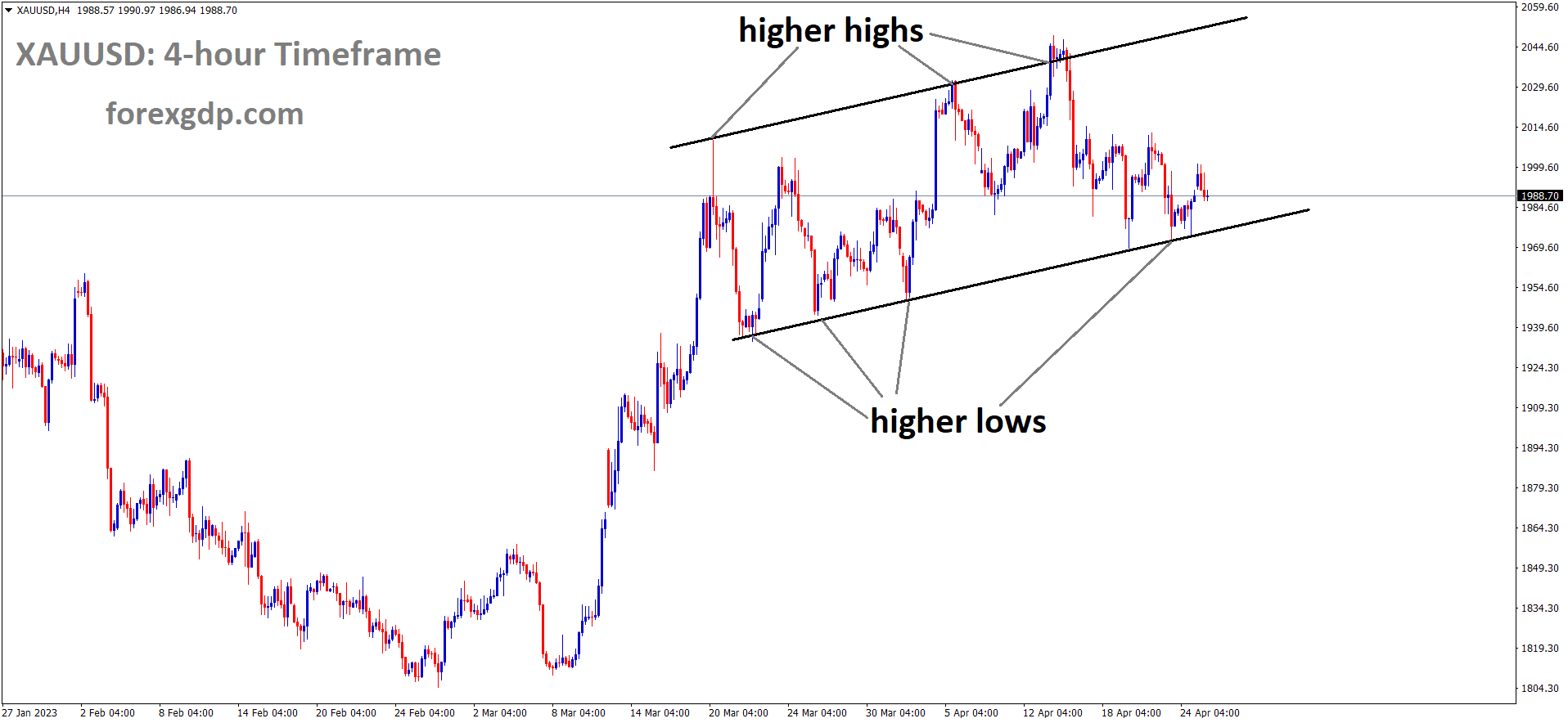XAUUSD is moving in an Ascending channel, and the market has rebounded from the higher low area of the channel
#XAUUSD Analysis Video
Gold’s Steady Ascent Amid Global Economic Shifts: What’s Driving Its Growth?
Gold has been a topic of much discussion lately, especially as it continues to hover around new all-time highs. Investors and market watchers are buzzing about its resilience, and for good reason. As global interest rates seem set to take a steeper dive, Gold’s appeal as a stable, non-interest-bearing asset is growing stronger by the day. But what’s really going on behind the scenes? Let’s take a deep dive into how global economic conditions are impacting Gold’s value and why it remains a hot favorite for investors looking for safety in uncertain times.
Why Gold Is Holding Strong in the Face of Falling Interest Rates
One of the primary reasons Gold is enjoying sustained upward momentum is due to the expected fall in global interest rates. Central banks around the world are beginning to shift toward cutting interest rates to stimulate their respective economies. This downward trend is creating a very favorable environment for Gold, particularly because it doesn’t yield interest like other financial assets. When interest rates are low, the opportunity cost of holding Gold, which doesn’t provide a dividend or yield, decreases. In simpler terms, investors aren’t missing out on high returns from other assets, making Gold a more attractive option.
The Role of Central Banks in Gold’s Rally
Central banks have been cutting interest rates across the board, from Europe to Asia and beyond. This global easing of monetary policies is proving to be a significant catalyst in Gold’s steady climb. With inflation cooling off in many countries, the expectation is that central banks will continue to ease rates further. Here’s a closer look at how some of the world’s most influential central banks are influencing Gold’s journey to new highs:
Europe: The ECB’s Aggressive Easing Cycle
The European Central Bank (ECB) has recently slashed its interest rates, marking a clear pivot toward more aggressive monetary easing. The ECB’s cuts have been more frequent than initially expected, which has only fueled investor optimism regarding Gold. Analysts predict that the ECB will continue on this trajectory, making further cuts in the coming months. As rates head lower, the demand for Gold as a store of value has grown, making it a preferred asset for investors looking to hedge against potential economic downturns.
Japan: Inflation and the BoJ’s Dilemma
In Japan, the Bank of Japan (BoJ) has been considering rate hikes, but recent inflation data may force them to hold back. A recent dip in Japan’s Consumer Price Index (CPI) has cast doubt on whether the BoJ will raise rates as planned. If inflation continues to fall, the BoJ could maintain its current ultra-low interest rates, which is bullish for Gold. As long as Japan’s interest rates remain low, Gold will continue to look attractive to investors who are looking for safe, stable assets.
United Kingdom and Canada: More Rate Cuts Ahead?
The Bank of England (BoE) and the Bank of Canada (BoC) are also contributing to Gold’s rally by signaling potential rate cuts. Lower-than-expected inflation data in the UK has almost cemented the possibility of an interest rate cut at the BoE’s next meeting. Meanwhile, speculation is mounting that the BoC could implement a significant rate cut in its upcoming policy meeting. These moves could further boost Gold as investors look for safe-haven assets amidst shifting economic conditions.
XAUUSD has broken the Ascending channel in the upside
How Falling Interest Rates Are Pushing Gold Higher
When central banks cut interest rates, it has a ripple effect across the entire financial market. Lower interest rates reduce the returns investors can expect from traditional interest-bearing assets like bonds or savings accounts. This lack of return makes Gold, which doesn’t pay interest but is seen as a reliable store of value, more appealing. Investors start to shift their portfolios toward Gold to protect their wealth from market volatility and potential economic downturns.
Lower interest rates also tend to weaken national currencies. As currencies devalue, the cost of purchasing Gold in those currencies decreases, making Gold more affordable and attractive to investors. In this way, falling interest rates not only lower the opportunity cost of holding Gold but also boost its demand as an alternative to declining currencies.
Global Uncertainty Boosts Gold’s Safe-Haven Appeal
Beyond interest rates, the broader global economic uncertainty is another driving factor behind Gold’s rise. Whether it’s the unpredictable nature of global trade relations, economic slowdowns, or political instability in key regions, Gold has historically been viewed as a safe-haven asset. When uncertainty looms large, investors flock to Gold as a way to shield their portfolios from potential losses in riskier markets.
XAUUSD is moving in the Uptrend channel, and the market has fallen from the higher high area of the channel
Moreover, with concerns around global economic growth, particularly in major economies like the US, Europe, and China, Gold has emerged as a popular asset to preserve wealth. Investors are opting for Gold to navigate through times of turbulence and unpredictability, ensuring their portfolios remain resilient.
The Impact of U.S. Economic Data on Gold’s Upside Potential
While global trends point toward sustained growth in Gold, the U.S. remains somewhat of an outlier. Strong economic data coming from the U.S., such as retail sales and employment figures, is tempering the aggressive rate-cut narrative there. For example, U.S. retail sales have been higher than expected, and the job market continues to show resilience. This has led some analysts to believe that the U.S. Federal Reserve (Fed) may not cut rates as aggressively as central banks in other parts of the world.
However, even with the Fed’s more cautious approach to cutting rates, Gold’s upside remains significant. The overall economic landscape still leans toward lower rates and global uncertainty, both of which support Gold’s upward trend. Additionally, while U.S. data may cause some headwinds for Gold, the broader global trends favor further gains in the precious metal’s price.
Final Thoughts: What’s Next for Gold?
As we look ahead, Gold seems poised to continue its upward momentum. The combination of falling global interest rates, economic uncertainty, and the increasing appeal of Gold as a safe-haven asset all point to sustained demand for this precious metal. While strong U.S. data may slow down Gold’s rise, the broader global trends suggest that investors will continue to turn to Gold as a key part of their portfolios.
If you’re considering investing in Gold, this may be an ideal time to explore your options. The long-term trends indicate that Gold will remain a critical asset for those seeking stability and protection against economic volatility. As always, stay informed and keep an eye on central bank policies, inflation data, and overall market sentiment, as these will play key roles in shaping Gold’s future.
Don’t trade all the time, trade forex only at the confirmed trade setups
Get more confirmed trade signals at premium or supreme – Click here to get more signals , 2200%, 800% growth in Real Live USD trading account of our users – click here to see , or If you want to get FREE Trial signals, You can Join FREE Signals Now!



